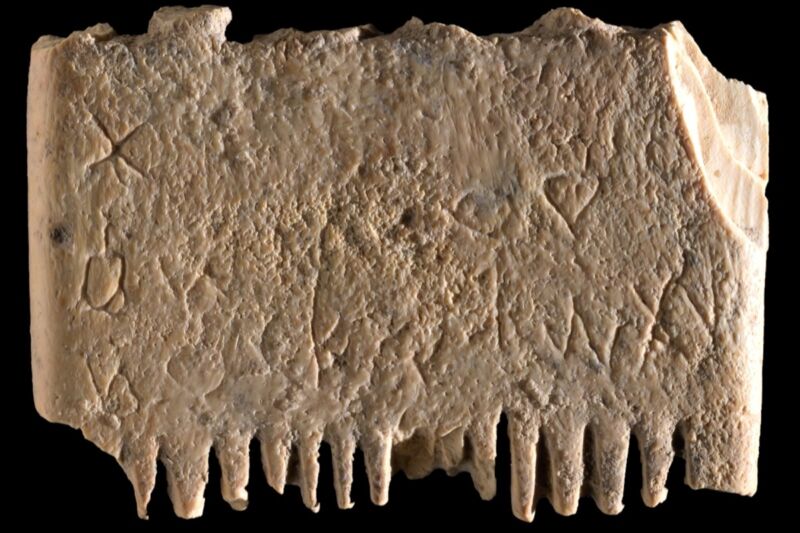
Enlarge / Archaeologists excavated this engraved ivory comb at an ancient site in Israel. (credit: Dafna Gazit, Israel Antiquities Authority)
Several years ago, archaeologists unearthed a small ivory comb at Tel Lachsich in Israel, once a major Canaanite city-state in the second millennium BCE. But it wasn't until last December that someone realized the comb had an inscription using early pictograph symbols of the first alphabet. Once deciphered, the inscription turned out to be a spell for preventing an infestation of head lice, according to a new paper published in the Jerusalem Journal of Archaeology.
“This is the first sentence ever found in the Canaanite language in Israel," said co-author Yosef Garfinkel, an archaeologist with the Hebrew University of Jerusalem. "There are Canaanites in Ugarit in Syria, but they write in a different script, not the alphabet that is used till today. The Canaanite cities are mentioned in Egyptian documents, the Amarna letters that were written in Akkadian, and in the Hebrew Bible. The comb inscription is direct evidence for the use of the alphabet in daily activities some 3,700 years ago. This is a landmark in the history of the human ability to write.”
While early writing systems emerged in Mesopotamia and Egypt over 5,000 years ago, they used symbols rather than a bona fide alphabet, which appeared significantly later, around 1800 BCE. Accordingly to the authors, little is known about this first alphabet because so few inscriptions have survived that predate the 13th century BCE—just a few letters, maybe a word or two, usually lacking context. "Thus, it is very likely that most writing was carried out on perishable materials that have decayed over time," Garfinkel et al. wrote. Since the 1930s, the Lachsich site has yielded a dozen or so inscription fragments from between the 13th and 12th centuries BCE, suggesting the city-state and surrounding region played a leading role in the alphabet's early history.
Read 8 remaining paragraphs | Comments
